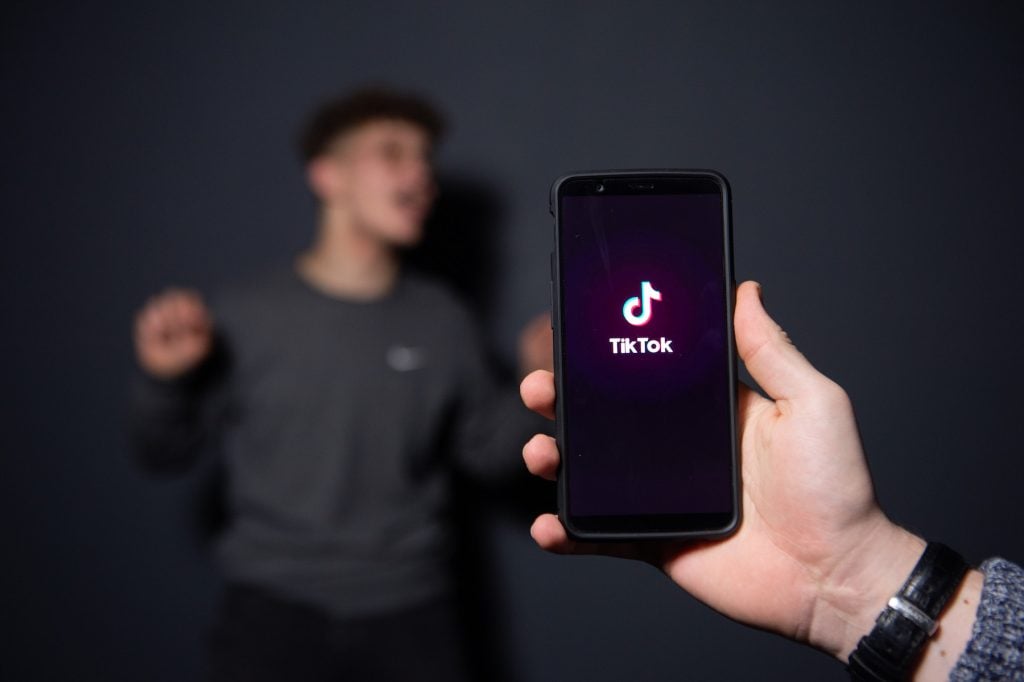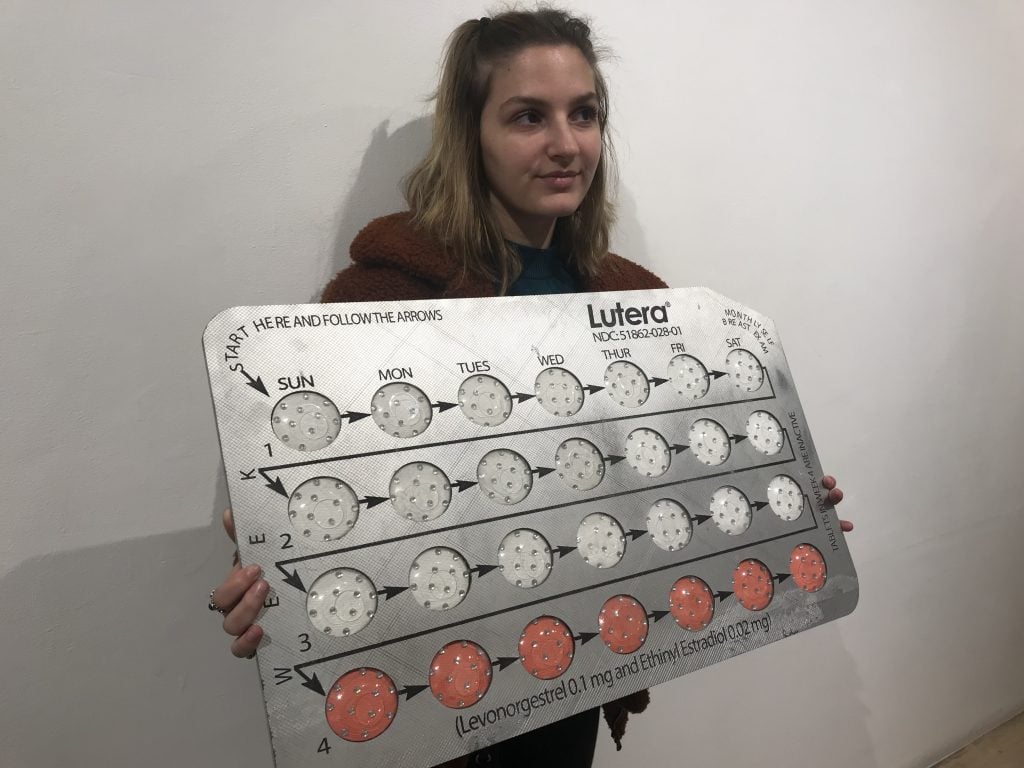People
These Struggling Artists Found Success on TikTok. A Looming Ban on the App in the US Threatens What They’ve Built
For creatives and institutions, the pending ban of TikTok and WeChat could mean significant losses of income and opportunity.

For creatives and institutions, the pending ban of TikTok and WeChat could mean significant losses of income and opportunity.

Zachary Small

For years, Colette Bernard had attempted to build an online audience for her art practice without much success. Then she joined TikTok.
Attention came almost immediately with one of Bernard’s first videos uploaded to the platform gaining nearly a half-million views. The post featured the Pratt Institute student carrying her sculpture of an outsized birth control package through New York City.
The video’s popularity came with an added benefit. Bernard has noticed that her TikTok fans have been migrating to her online store and buying artworks. In the past five months, the 21-year-old artist estimates that she has shipped thousands of parcels and made roughly $10,000.
“TikTok is opening doors in the art world,” explained Bernard. “And for the first time, I actually have savings in my bank account.”
But that financial lifeline for artists during the pandemic could soon end.

Colette Bernard with her sculpture of birth control pills that made her TikTok famous, courtesy the artist.
In early August, president Donald Trump issued executive orders that effectively ban TikTok and WeChat in the United States. The move came after government officials and digital experts cited security concerns with the apps, which are both owned by the Chinese company ByteDance.
Despite promises of an agreement between ByteDance, Oracle, and Walmart to create a new corporation called TikTok Global where the two American companies would own a 20 percent stake in the business, the social media platform’s fate remains unclear. Just recently, a federal judge granted a preliminary injunction against the Trump administration’s ban, but that doesn’t cover a broader set of restrictions that will take effect in November.
Despite security concerns, some artists and cultural organizations are worried that they are about to lose access to platforms they had just barely begun to explore—losing digital audiences and new sales during a time when the coronavirus pandemic has forced an economic recession.
The American Alliance of Museums has even come to WeChat’s defense. “We are very happy to support WeChat’s initiative to help digitalize the museum experience,” said Arthur Affleck, vice president of development for the nonprofit organization, in a May press release for WeChat.
“The museum mini programs will enable Chinese audiences to tour American museums remotely,” Affleck added, referring to an initiative on the app promoting nearly a dozen institutions including the Museum of Modern Art, the Guggenheim, and the Brooklyn Museum. Christie’s also has a similar program, allowing WeChat users to preview upcoming auctions and get real-time results.
Before the pandemic, some museums that utilized WeChat saw remarkable returns on their investment in the digital platform. MoMA was an early adopter of the social media channel, and its campaigns on WeChat before its reopening in 2019 saw a boost in Chinese tourists and interest in the museum’s collection abroad.
Other institutions are finding success on TikTok. That includes the Carnegie Museum of Natural History, which joined the platform in January and has attracted more than 300,000 followers with curator-concocted snail jokes and puns about birch trees.
But according to JiaJia Fei, a digital media strategist in the arts, the barriers to accessing these platforms are extraordinarily high for most cultural organizations, which currently lack the resources and personnel to embark on such social media blitzes because of the pandemic. “In the grand scheme of things, it would take a couple more years for most museums to join TikTok,” Fei estimated. “Compounded is the unpredictability of whether or not that content will be accessible in the future if there’s a ban.”
Ultimately, however, it’s the artists on the vanguard of these platforms that stand to lose the most from an impending shutdown.
For the last decade, Landin had struggled finding a path toward becoming a full-time artist. The classically-trained sculptor had previously taken pizza delivery jobs and construction work to pay the bills, struggling with mental health issues exacerbated by financial insecurity.
TikTok provided a new hope for the 30-year-old, who has become one of the most popular artists on the platform, sharing her painting techniques and tips for modeling noses from clay. Since she joined, Linden has received tens of millions of views and gained more than 700,000 followers. (For comparison, the artist Cindy Sherman has around 320,000 followers on Instagram.)
“TikTok has been such a positive force in my life,” explained Landin. “All I ever wanted is to make art and afford food. Now all of that has been put into jeopardy because of the Trump ban.”
Through her channel, Landin says that she receives several thousand dollars per month, which makes up nearly fifty percent of her current income. That money comes through her personal webstore—linked in her TikTok profile—and from monetized views on her channel, which are valued around three cents each.
However, the impending ban of TikTok has the artist bracing for the unknown. Other platforms like YouTube and Instagram are more labor-intensive and challenging for those looking to reach new audiences. “I don’t even like thinking about what will happen,” said Landin. “Eventually, I might have to get a job with Uber or Lyft.”
For now, Landin is staying focused on the positives. Her recent videos on clay-sculpting noses have focused on bringing increased attention to the lack of diversity in figurative art and about representing different ethnicities in sculpture.
“When I started making other types of noses, I started getting hundreds of emails from girls thanking me and saying that they finally felt beautiful,” said Landin. “It’s been a life goal to have such an impact on people. What more could you want?”